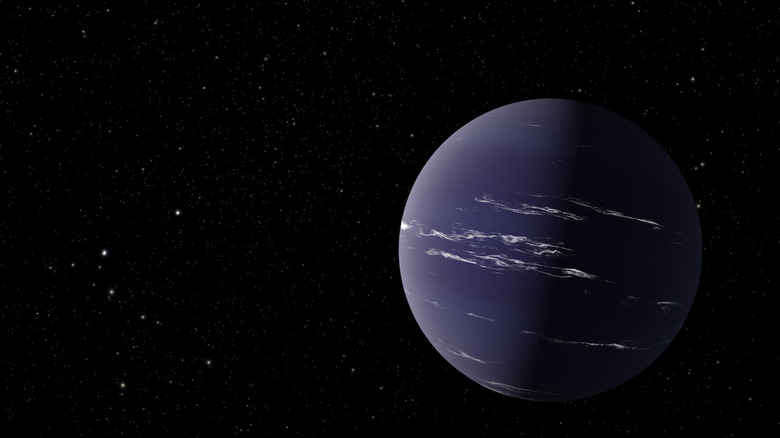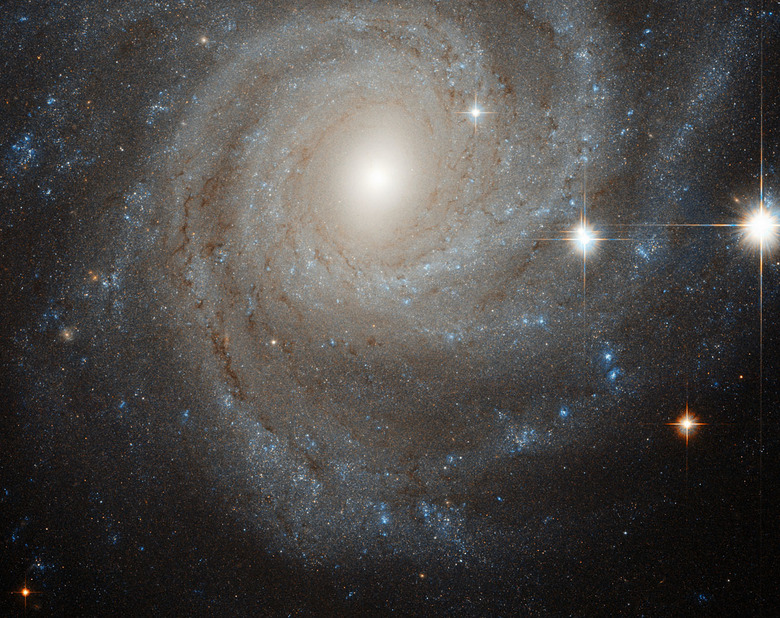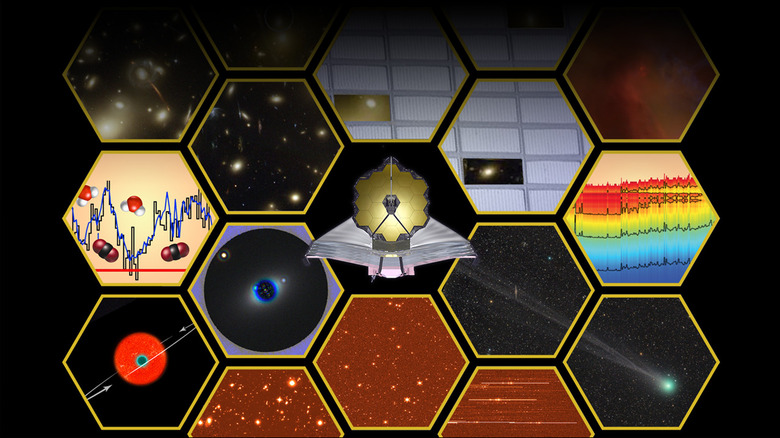What NASA's 10 Billion Dollar Space Telescope Is Hoping To Find
The James Webb Space Telescope, recently launched by NASA, the European Space Agency, and the Canadian Space Agency, is an incredible piece of kit. According to NASA, its origami-style construction includes a mirror which consists of 18 segments made of ultra-lightweight beryllium. It has a huge sunshield the size of a tennis court which consists of five layers to keep the telescope safe from the intense heat of the sun. And it is armed with four instruments, both cameras and spectrometers, which are super sensitive and can pick up the faintest of signals from space. They work in the infrared wavelength, allowing the telescope to peer through clouds of dust which would obscure its view if it looked in the visible light wavelength.
Image Credit: NASA GSFC/CIL/Adriana Manrique Gutierrez
But what is it all for? What do you do with the world's most powerful space telescope? The answer is that you use it for all sorts of research, and it might help us answer some of the biggest questions in astronomy.
Finding a new Earth
Image Credits: NASA/JPL-Caltech
One of the most exciting topics in astronomy right now is the search for planets outside of our solar system, which are called exoplanets. It's hard to detect planets because they are so much smaller and less bright than stars, but using some clever methods astronomers have been able to identify over 4,000 of these exoplanets to date.
However, we don't know much about these planets. Typically, you might only be able to tell a planet's approximate size or mass, and maybe how far away from its star it orbits. That's pretty amazing for information from another star system, and it can tell you if the planet is rocky, like Earth or Mars, or a gas giant, like Jupiter and Saturn. But beyond that, we don't know much about these planets. Are they covered in water? Do they have a thick atmosphere? Might humans be able to survive there? We just don't know.
The next big step in understanding exoplanets – especially if we're hoping to find a second Earth, or another planet we could live on one day – is to see if a given exoplanet has an atmosphere. Think about the differences between Earth, which has a rich atmosphere, and Mars, which has a very thin atmosphere. Knowing what the composition of an atmosphere is, and how thick it is, is key to understanding what the environment of an exoplanet would be like.
James Webb will be able to detect exoplanet atmospheres using its infrared instruments (via Digital Trends). By pointing directly at a distant star and not moving at all, the instruments will be able to detect small changes in brightness when a planet passes between the star and the telescope. These tiny dips can be analyzed to learn more about the distant planet, including whether or not there's an atmosphere of gasses around the planet and how thick they are. This can tell us far more about whether exoplanets are potentially habitable than current instruments.
Looking back in time
Image Credits: ESA/Hubble & NASA
Another amazing ability James Webb will have is to look back on some of the earliest galaxies, which is like peering back in time. That works because light takes time to travel, so when you look at something very, very distant, it takes time for the light to travel between it and you. In effect, you are seeing the distant object as it was in the past. James Webb will look at some of the most distant galaxies ever observed, seeing them as they were when the universe was very young. In effect, we'll be able to look back to some of the youngest phases of the universe.
As well as being frankly really cool, it's helpful to look at very old galaxies because they are different from the younger galaxies we see nearer to us. According to NASA, older galaxies tend to be smaller and clumpier than their younger counterparts, with stars being born in pockets of intense activity. Over time, these small clumpy galaxies spread out and even out into the type of galaxies we see more commonly today, but astronomers still aren't sure exactly how this happens. Using James Webb to observe these early galaxies will help them fill in some of the blanks.
There are many questions we still have about how galaxies form as well. For example, we know that at the center of almost every galaxy is an enormous black hole, hundreds of thousands or even a million times the mass of the sun. But there's a lot we don't know about these supermassive black holes, such as whether they form first and the galaxy forms around them, or whether the galaxy forms first and causes the supermassive black hole to form. James Webb will help to understand more about the formation of galaxies and the relationships between galaxies and their supermassive black holes.
Big questions with big answers
Image Credits: NASA, ESA, and A. Feild (STScI)
These are just a few of the topics that James Webb will be studying. There's a full list of study topics for James Webb's first year available for the public to view (via Space Telescope Science Institute) which includes questions about how planets form, searching exoplanets for signs of volcanic activity, examining the hot gas that exists between galaxies called the intergalactic medium, and even about the large-scale nature of the universe itself.
The sheer diversity of topics that this one telescope could help us to study is incredible.
"We are opening the infrared treasure chest, and surprises are guaranteed," said Dr. John C. Mather, Senior Project Scientist for the Webb mission and Senior Astrophysicist at NASA's Goddard Space Flight Center in Greenbelt, Maryland (via NASA). "How did the universe make galaxies, stars, black holes, and planets, and our own very special little Earth? I don't know yet, but we are getting closer every day."



